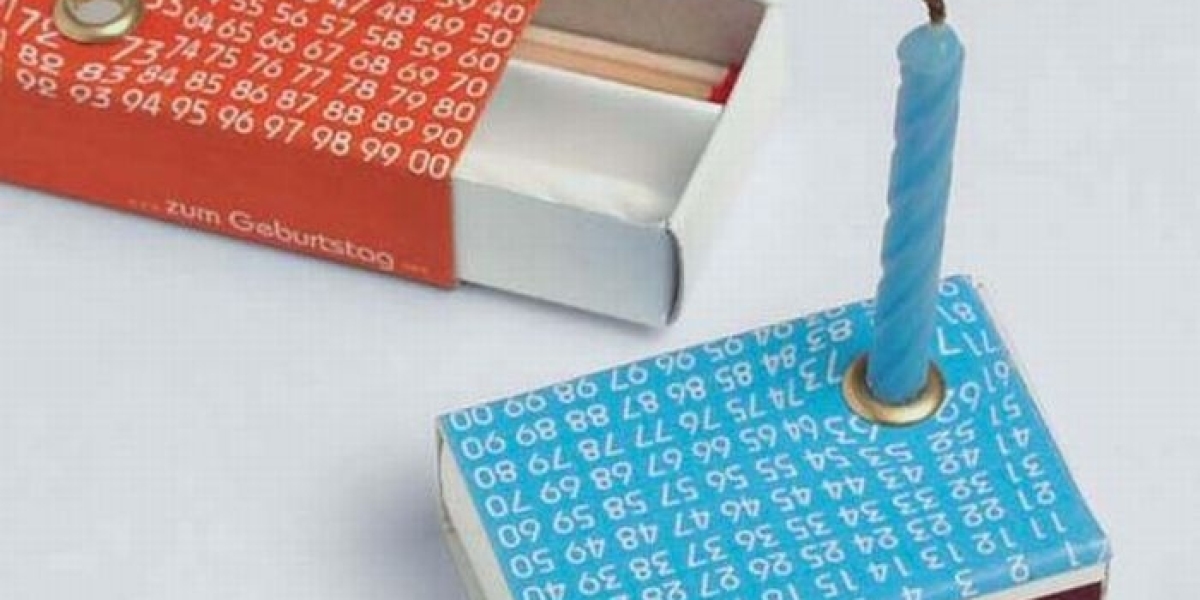Lighting candles is a relaxing and enjoyable practice for many people. However, using matchboxes to light candles comes with safety concerns that must not be ignored. This guide will help you understand how to use matchboxes with candles safely and responsibly in your home or any other environment.
Choose the Right Environment Before Lighting a Candle
Before lighting any candle, you must pay close attention to your surroundings. Candles can cause fires if used in the wrong environment. Make sure the surface where the candle is placed is stable, clean, and heat-resistant. Avoid placing candles on wooden furniture or near flammable materials like paper, curtains, or cloth.
Also, keep candles away from windows where wind can blow the flame or nearby decorations. A small draft can move a curtain over a lit candle, leading to disaster. Try to use candles in a quiet, indoor space where there’s no risk of them being knocked over by pets or people passing by. Using glass holders or ceramic plates can add an extra layer of safety.
Proper ventilation is important too. A closed room with a burning candle may build up carbon particles or reduce oxygen levels slightly. While this is not a big problem with short-term use, it’s still better to keep a window slightly open when using candles for long periods.
Lastly, check if children or pets are around. Curious children or excited animals may touch or knock over a candle. Supervise carefully or keep candles out of reach to prevent accidents. Simple planning can go a long way toward safer use.
Use the Matchbox Correctly to Avoid Burns or Injury
Striking a match seems easy, but careless handling can lead to burns or minor injuries. Always strike the match away from your body and face. Hold the match at a slight downward angle, so the flame moves away naturally as it lights up. If the match breaks, discard it properly and use another. Never try to light a broken match; it can cause the flame to jump unexpectedly.
Avoid lighting matches near your skin or clothing. Cotton and polyester catch fire quickly, and even a small flame can spread fast. Always hold the match by the tip, giving enough space between your fingers and the burning head.
Once the match is lit, move it carefully toward the candle wick. Hold it steady to avoid touching the wax or container. If the matchstick gets too hot before you light the wick, do not force it. Blow it out and try again. Safety always comes first.
When the candle is lit, shake the match gently or blow it out safely. Then place the used match in a non-flammable dish or container. Never throw a hot match directly into the trash, especially if it contains paper or plastic. Even a small ember can ignite other materials.
Using candle matchboxes responsibly ensures that you protect yourself and your surroundings. Safety starts with simple steps like striking matches correctly and being aware of how close the flame is to your fingers.
Be Aware of the Type of Candle You Are Lighting
Different candles burn in different ways. Some candles, like tea lights, burn low and safely inside containers. Others, such as pillar or taper candles, have larger open flames and require more attention. Knowing the kind of candle you’re using helps you handle it better.
Scented candles often contain oils that can burn faster or create stronger flames. These should be used more carefully, especially in small rooms. Avoid lighting too many at once, as it may fill the room with heavy fragrance or reduce air quality.
Tall candles need strong, stable holders. Without this, they may tip and spill hot wax. Votive candles also need proper containers to avoid mess or fire. Recycled jars or purpose-made candle holders can keep the wax contained and the flame upright.
Before lighting, trim the wick to about one-quarter of an inch. A long wick creates a large flame, which increases the risk of fire. Shorter wicks produce a cleaner, more controlled flame. Always check the condition of the wick before lighting. A curled or split wick can burn unevenly.
In outdoor settings, even wind-protected candles need careful supervision. Use covers or lanterns to protect the flame from sudden gusts. Unstable outdoor tables or windy evenings can quickly turn a peaceful moment into a fire risk.
Each type of candle requires its own handling techniques. Being familiar with them will help you enjoy your candlelight safely and for longer periods.
Keep Fire Safety Tools Close at Hand
It is always wise to have fire safety tools nearby when lighting candles. Even a small flame can get out of control in seconds. You don’t need heavy-duty tools—just basic ones that can help you react quickly.
Essential fire safety items include:
- A small fire extinguisher rated for home use
- A metal lid or tray to snuff out flames
- Baking soda (effective for putting out small wax fires)
- A fire blanket in case of clothing or larger items catching fire
Make sure these tools are within reach but out of children's access. Keeping safety tools in the same room as your candles allows quick action in case of emergency. Never assume the fire will burn out on its own.
You can also keep a large glass of water nearby. While water should not be used on wax fires, it can help if clothing or paper catches fire. For candle-related fires, smothering is often safer than using water.
Lastly, learn how to respond calmly. Panic can lead to poor decisions. Practice a simple fire reaction plan—turn off air vents or fans, smother the flame, and evacuate if necessary. Being prepared will always give you an advantage.
Never Leave Candles Unattended
One of the most important candle safety rules is never leaving a burning candle alone. Fires often start when people walk away and forget they lit a candle. Even if you plan to step out for a minute, it’s not worth the risk.
If you receive a phone call or have to leave the room, blow out the candle. Relighting it later is safer than coming back to a problem. It only takes a second for a candle to fall or for something to touch its flame.
This rule applies even more during sleep. Never fall asleep with a candle burning. No matter how safe it seems, an accident can happen while you’re not awake to stop it. Use flameless candles or battery-powered lights if you want ambiance while sleeping.
Candles left near windows can tip over due to wind. Even safe-looking spots can become dangerous if you're not around to monitor them. Pets might knock them over or kids may play near them without supervision.
Make it a habit to check all rooms before leaving the house or going to bed. If candles were used earlier in the evening, double-check that they’ve been properly extinguished. Doing this consistently can prevent most candle-related house fires.
Your presence is the best safety tool when using candles. Simply being there allows you to react fast if something seems off.
Use Candle Matchboxes Only in Dry Conditions
Humidity can affect how matches light and how candles burn. If your matchbox has been stored in a damp area, the matches may not strike properly. A wet match can break, sputter, or fail completely. This makes the lighting process frustrating and unsafe.
Keep your matchboxes in a dry, cool place. Avoid storing them in bathrooms, near sinks, or in humid storage closets. Moisture weakens the friction strip and the match heads, leading to uneven burning.
Lighting a candle with damp matches may require more force, increasing the chance of the match breaking. This can lead to small pieces flying off or the flame becoming unpredictable. Dry conditions help matches light smoothly and give you more control over the flame.
If you live in a humid region, consider placing your matchboxes in a sealed container with a moisture-absorbing packet. This keeps the environment around the matches dry. Good storage is an overlooked part of candle safety, but it makes a real difference.
The quality of your match also matters. Using high-quality candle matchboxes can reduce problems with ignition. Once lit, strike once and hold the flame steadily to the candle. Avoid striking the match repeatedly or pressing it too hard on the box surface.
Dry matches are not just easier to use—they are safer and more reliable. They help you light candles without delay and reduce the risk of broken flames or sudden sparks.
Teach Children Proper Candle Safety Habits
Children are naturally curious about fire and light. But this curiosity can become dangerous if they are not taught how to behave around candles. Teaching them early will build respect for fire and help prevent accidents.
Start by explaining that candles are not toys. Show them what a burning candle looks like, but from a safe distance. Let them observe, but never let them touch. Children should always have adult supervision near any flame.
If your child is old enough, teach them how to blow out a candle safely. But never let them strike a match or light a candle without guidance. Make sure they know the candle should only be used when an adult is present.
Set rules for when candles can be used in the house. For example, no candles while playing or no candles in bedrooms. These rules give children clear boundaries.
Let them help in safe ways, such as placing the candle in a holder or setting up the table. This makes them feel involved while keeping them away from actual lighting or extinguishing.
Reinforce safety messages often. Remind them not to run near candles or throw objects into flames. Repeat these lessons in a calm and clear way until they become habits.
The earlier kids learn candle safety, the better. They’ll carry these habits into adulthood and avoid many of the common mistakes people make with fire.
Properly Extinguish the Candle After Use
Ending your candle session safely is just as important as starting it correctly. Many fires start because candles were not put out the right way. Simply blowing on the flame might not be enough.
The best method is to use a candle snuffer. It cuts off the oxygen to the flame gently. This reduces the chance of flying sparks or hot wax. If you don’t have one, blow gently at an angle while holding your face at a safe distance.
After the flame goes out, watch the wick for a few seconds. Make sure it’s completely extinguished and not still glowing. Some wicks can burn silently for a few seconds, which can re-ignite wax or flammable materials nearby.
Do not move the candle right after extinguishing it. Let it cool first. Hot wax or glass containers may burn your hands or spill on furniture. Wait at least 10–15 minutes before handling or cleaning.
Also, never pour water into the wax to cool it down faster. This can cause splattering and may even crack glass holders due to the sudden change in temperature.
Safely disposing of leftover matches or wick trimmings is also part of the process. Don’t leave them near the candle or throw them into a regular trash bin while still warm.
By making proper extinguishing a habit, you complete your candle experience on a safe note. It only takes a few moments but makes a big difference.
Practicing safe habits when using candles and matches can prevent serious accidents. With a little awareness and some simple precautions, you can enjoy the warm glow of candles without worry. Remember, your attention to safety today ensures comfort and peace for the future.
Conclusion
Using candles can bring peace, beauty, and warmth to your space, but only when done with care and responsibility. From choosing a safe environment to properly lighting and extinguishing the flame, each step matters. Whether you're lighting a candle for relaxation, ceremony, or decoration, following safe practices helps prevent accidents and ensures a calm experience.
Always stay aware of your surroundings, store your matches in dry places, and never leave a burning candle unattended. Use proper tools, supervise children closely, and take your time when lighting or putting out the flame. Using candle matchboxes in a safe and mindful way adds charm without risk to your home.
By applying the safety tips shared in this guide, you can enjoy candlelight with peace of mind. Small habits create big safety. Make each candle moment not just warm and pleasant—but safe, too.
Visit Our Website: https://ibexpackaging.com/custom-matches/








